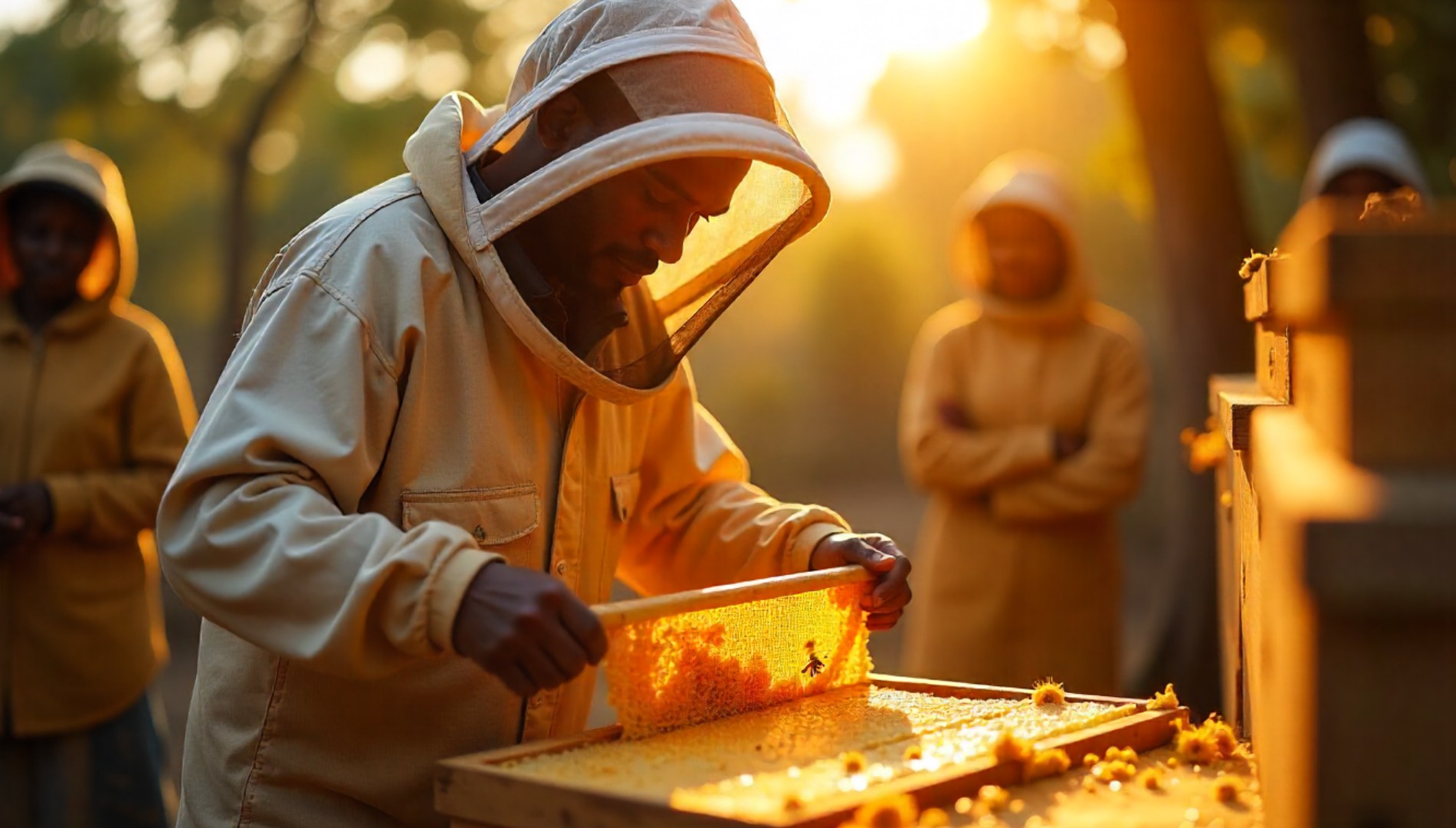
Apiculture and Economic Empowerment: How Beekeeping Transforms Communities
Introduction
Beekeeping is far more than harvesting honey — it is a transformative livelihood that has empowered rural communities worldwide. Beyond its role in producing honey, apiculture acts as a catalyst for economic resilience, gender empowerment, and environmental sustainability.
In many developing regions, especially across Africa and Asia, beekeeping has become a crucial strategy for combating poverty, improving food security, and fostering community development. This article dives deep into how apiculture can be a game-changer for smallholder farmers and rural economies.
The Multifaceted Value of Bees and Beekeeping
Pollination: The Hidden Economic Engine
Pollinators, predominantly bees, are responsible for pollinating over 75% of the world’s leading food crops. The Food and Agriculture Organization (FAO) estimates that pollination services contribute $235 to $577 billion annually to global crop production. Without healthy bee populations, staple crops like fruits, vegetables, coffee, and nuts would see drastic yield declines, threatening both nutrition and income.
Income Generation Beyond Honey
While honey remains the flagship product, beekeeping offers a diverse portfolio of income streams, including:
- Beeswax for cosmetics, candles, and pharmaceuticals
- Propolis and royal jelly with medicinal properties
- Pollination services rented to crop farmers
- Beekeeping equipment and accessories as local micro-enterprises
This diversity provides farmers with stable and multiple income sources, cushioning against crop failures or market fluctuations.
How Beekeeping Transforms Rural Livelihoods
Accessible and Inclusive Economic Opportunity
One of the greatest strengths of apiculture lies in its low barrier to entry. Unlike many agricultural ventures requiring large landholdings or heavy capital, beekeeping can be started with minimal investment — often just a few hives and basic training.
This accessibility makes it an ideal income-generating activity for:
- Smallholder farmers with limited land
- Women and youth seeking entrepreneurial opportunities
- Marginalized communities living in vulnerable environments
For example, a report by the International Fund for Agricultural Development (IFAD) shows that beekeeping initiatives in Ethiopia lifted many women-headed households out of poverty by increasing their monthly incomes by 40-60%.
Empowering Women and Youth
In rural areas, beekeeping is often led by women, who manage hive maintenance, harvesting, and product marketing. This involvement strengthens:
- Financial independence and decision-making power
- Skills development in business and agriculture
- Community leadership and social capital
Youth engagement programs in countries like Kenya and Nepal have demonstrated that apiculture can reduce rural unemployment by providing meaningful jobs and entrepreneurship pathways, mitigating urban migration.
Environmental and Food Security Benefits
Enhancing Agricultural Productivity
Bees improve crop productivity not just for the beekeeper, but for entire farming communities. Pollination increases yields by up to 30-50% for many fruits and vegetables, leading to greater food availability and income diversification.
Promoting Biodiversity and Ecosystem Health
Healthy bee populations support plant biodiversity, which stabilizes soils, regulates water cycles, and enhances resilience against climate shocks. In this way, beekeepers often become champions of local conservation efforts, advocating for pesticide reduction and natural habitat protection.
Challenges in Scaling Apiculture
Despite its benefits, apiculture faces real challenges:
- Pests and diseases like Varroa mites threaten hive health
- Climate change disrupts flowering patterns and forage availability
- Limited access to quality inputs and modern equipment
- Market issues including price volatility and poor value chains
Addressing these requires coordinated efforts: extension services providing technical support, policy incentives, access to credit, and market linkages.
Success Stories: Communities Thriving Through Bees
Case Study: Tanzania’s Beekeeping Cooperatives
In Tanzania’s Kilimanjaro region, local beekeepers formed cooperatives that:
- Trained members on sustainable hive management
- Established honey processing facilities
- Linked producers to national and international buyers
This cooperative model increased incomes by 50% on average and enhanced community cohesion.
Case Study: Nepal’s Honey Export Boom
Nepalese farmers have leveraged organic and wild honey production to tap into premium global markets. Supported by NGOs and government programs, they have:
- Adopted improved hive designs
- Implemented quality control systems
- Boosted export revenues by over 70% in five years
The Path Forward: Maximizing Apiculture’s Potential
To unlock the full potential of beekeeping, stakeholders must focus on:
- Capacity building: Expand technical training and knowledge sharing
- Research and innovation: Develop climate-resilient bees and modern hive technologies
- Policy frameworks: Create supportive policies for market access and investment
- Gender and youth inclusion: Design programs tailored for marginalized groups
- Sustainable practices: Promote ecological approaches to hive and landscape management
Conclusion
Apiculture is a powerful vehicle for economic empowerment and environmental stewardship. By investing in beekeeping, rural communities gain more than just honey—they gain resilience, dignity, and hope.
Supporting the growth of apiculture not only protects bees but builds thriving, sustainable livelihoods that uplift entire communities.
References
- FAO. (2021). Why Bees Matter. Food and Agriculture Organization of the United Nations.
- IFAD. (2019). Beekeeping for Poverty Reduction.
- World Bank. (2020). Beekeeping and Rural Livelihoods.
- Kenya Honey Council. (2023). Annual Report.
- UNDP. (2022). Climate Change and Smallholder Livelihoods.
🐝 Did you know? One beehive can support pollination for up to 300 million flowers per year, enhancing crop yields and biodiversity in surrounding ecosystems.
